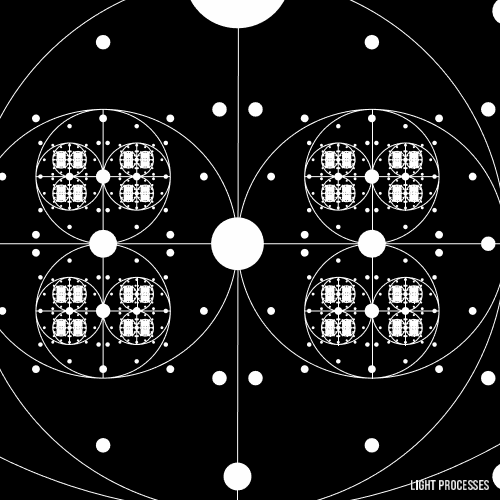
Dave Whyte is a PhD candidate who is currently studying the physics of foam. He is also an amazing animator. His geometric gifs are more than just beautiful; many of them also explain mathematical concepts in simple (but elegant) terms. His Tumblr, Bees & Bombs, has hundreds of gifs that he has posted over the years. His Twitter also has several posts that contain his source code (in case you want to try your hand at processing). You can also hit him up for some freelance work.
Below are some of our favorite animations from Whyte’s and others’ collections. Be sure to click the link after the definition to get more information.
1. This Is A Virtual Torus
The single-holed “ring” torus is known in older literature as an “anchor ring.” It can be constructed from a rectangle by gluing both pairs of opposite edges together with no twists (Wolfram.MathWorld)

2. How Pendulums Work
A Pendulum is something hanging from a fixed point which, when pulled back and released, is free to swing down by force of gravity and then out and up because of its inertia (Calacademy).

3. This Is A Cube
A cube is a three-dimensional solid object bounded by six square faces, facets or sides, with three meeting at each vertex (MathsIsFun).

4. Here’s The Difference Between a Circle and a Sphere
A circle and sphere are both round in shape but whereas a circle is a figure, a sphere is an object. You can compare the two as a drawing of a tennis ball on a piece of paper and the ball itself in real life. A circle is a 2D figure whereas a sphere is a 3D object having volume (DifferenceBetween).

5. How To Make A Near Fractal
Fractals are geometric figures that typically display self-similar patterns. The term “self-similarity” can be most readily understood by thinking of a camera that zooms in on an image. Typically, when you zoom in on a photograph, you see finer points, different details, and new structures. Not so with fractals. When you zoom in on a true fractal, no new detail appears. Nothing changes. Rather, the same pattern repeats over and over (FQTQ). This last one comes from Victor Doval. See his work here and here.

Be sure to check out more of Whyte’s work at his Tumblr blog. However, be warned, you may find yourself roaming about his many gifs for hours…so consider canceling your day plans.